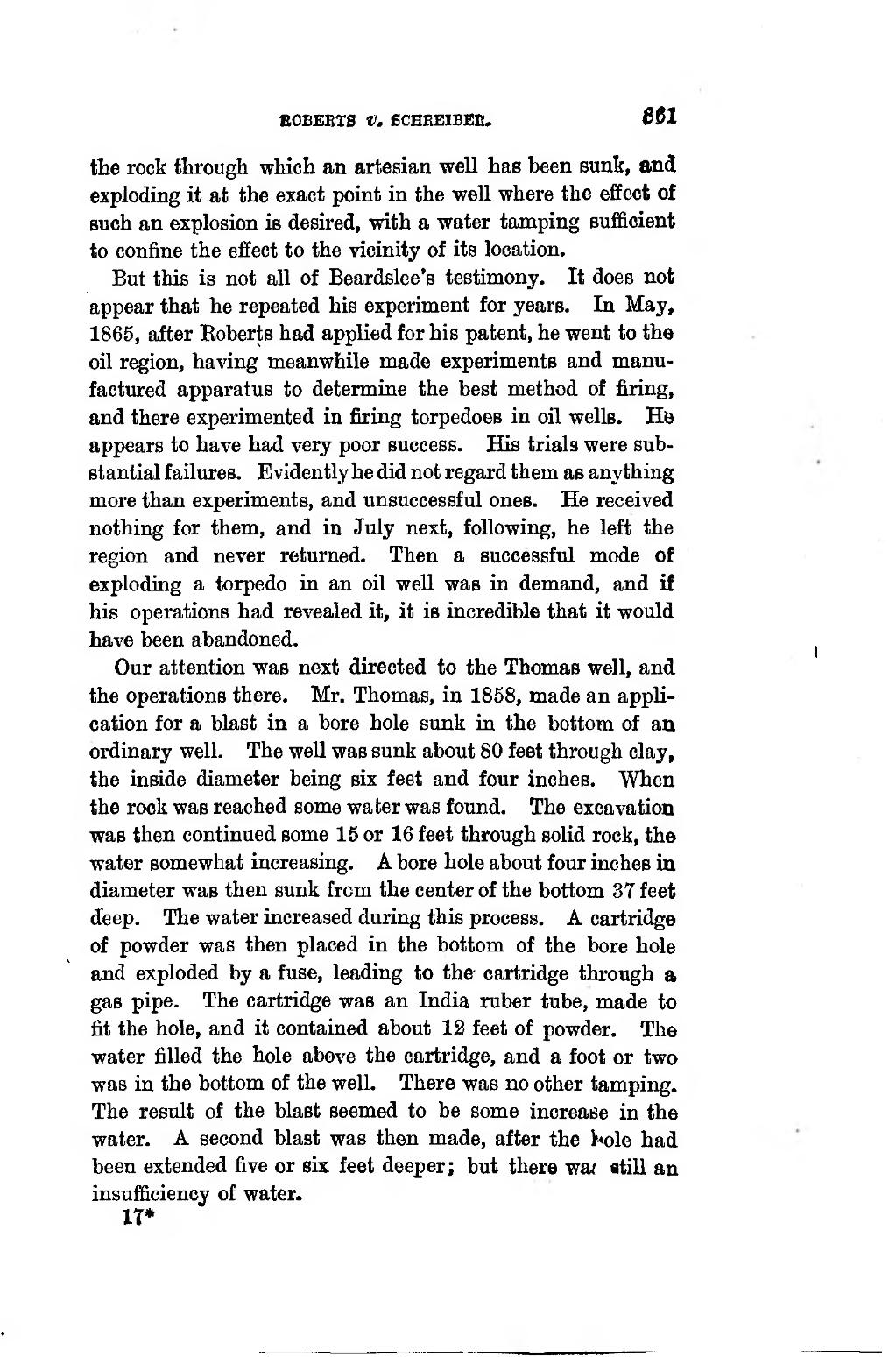EOBEBTS V. fiCHKEIBEE- 651 �the rock tbrough which an artesian well bas been sunt, and exploding it at the exact point in the well where the effect of Buoh an explosion is desired, -with a water tamping sufficient to confine the effect to the vicinity of its location. �But this is not ail of Beardslee's testimony. It does not appear that he repeated his experiment for years. In May, 1865, after Eoberts had applied for his patent, he went to the oil region, having meanwhile made experimenta and manu- factured apparatus to determine the best method of firing, and there experimented in firing torpedoes in oil wells. H& appears to have had very poor success. His trials were sub- Btantial f allures. Evidently he did not regard them as anything more than experimenta, and unsuccessf al ones. He received nothing for them, and in July next, foUowing, he left the region and never returned. Then a successful mode of exploding a torpedo in an oil well was in demand, and if bis operations had revealed it, it is incredible that it would bave been abandoned. �Our attention was next directed to the Thomas well, and the operations there. Mr. Thomas, in 1858, made an appli- cation for a blast in a bore hole sunk in the bottom of an ordinary well. The well was sunk about 80 feet through clay, the inside diameter being six feet and four inches. When the rock was reached some water was found. The excavation was then continued some 15 or 16 feet through solid rock, the water somewhat increasing. A bore hole about four inches in diameter was then sunk frcm the center of the bottom 37 feet deep. The water increased during this process. A cartridge of powder was then placed in the bottom of the bore hole and exploded by a fuse, leading to the cartridge through a gas pipe. The cartridge was an India ruber tube, made to fit the hole, and it contained about 12 feet of powder. The water fiUed the hole above the cartridge, and a foot or two was in the bottom of the well. There was no other tamping. The resuit of the blast seemed to be some increase in the water. A second blast was then made, after the >«ole had been extended five or six feet deeper; but there waf atill an insufficiency of water. �IT* ����
